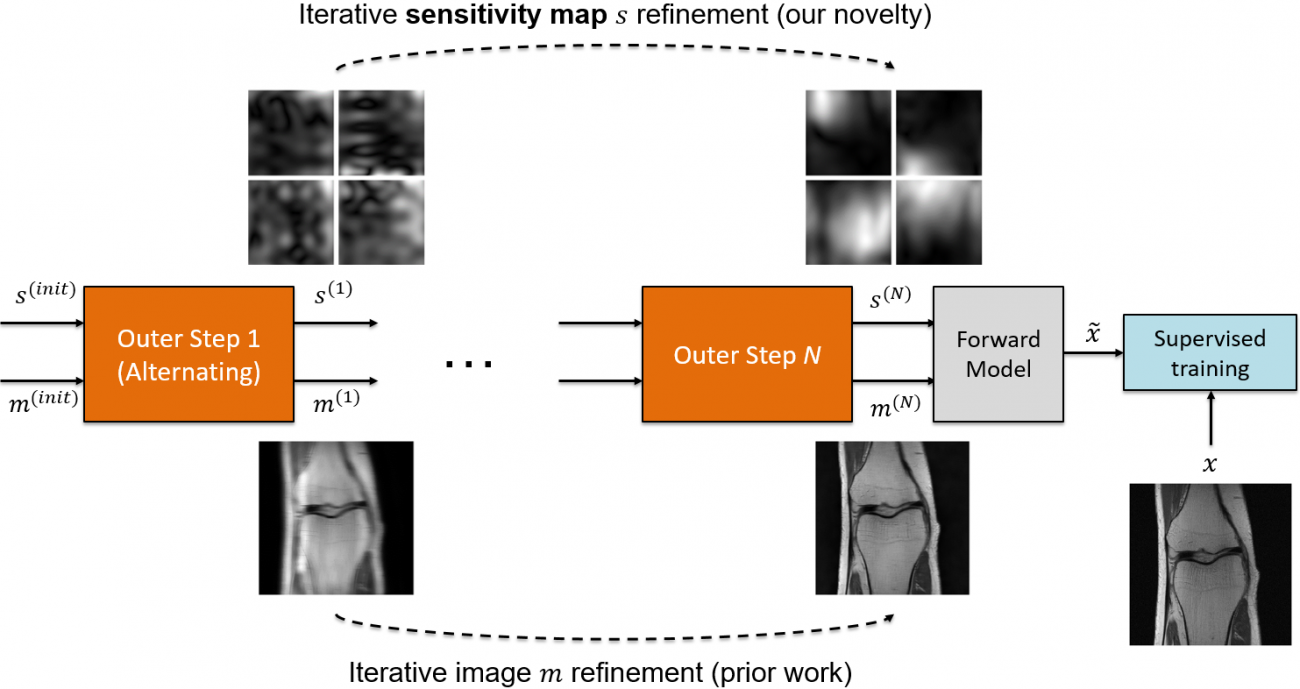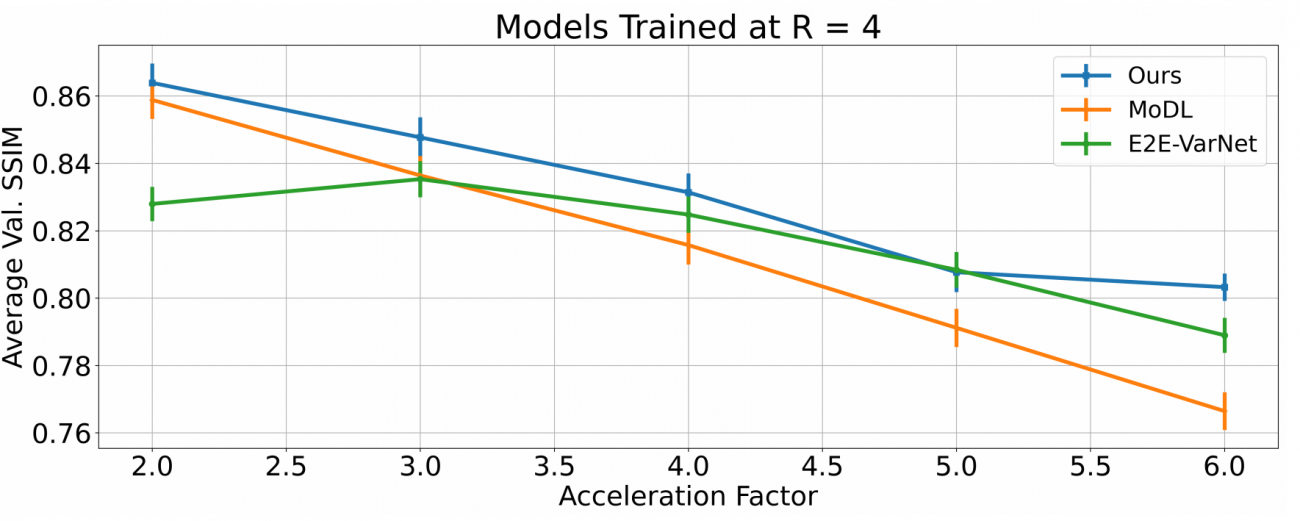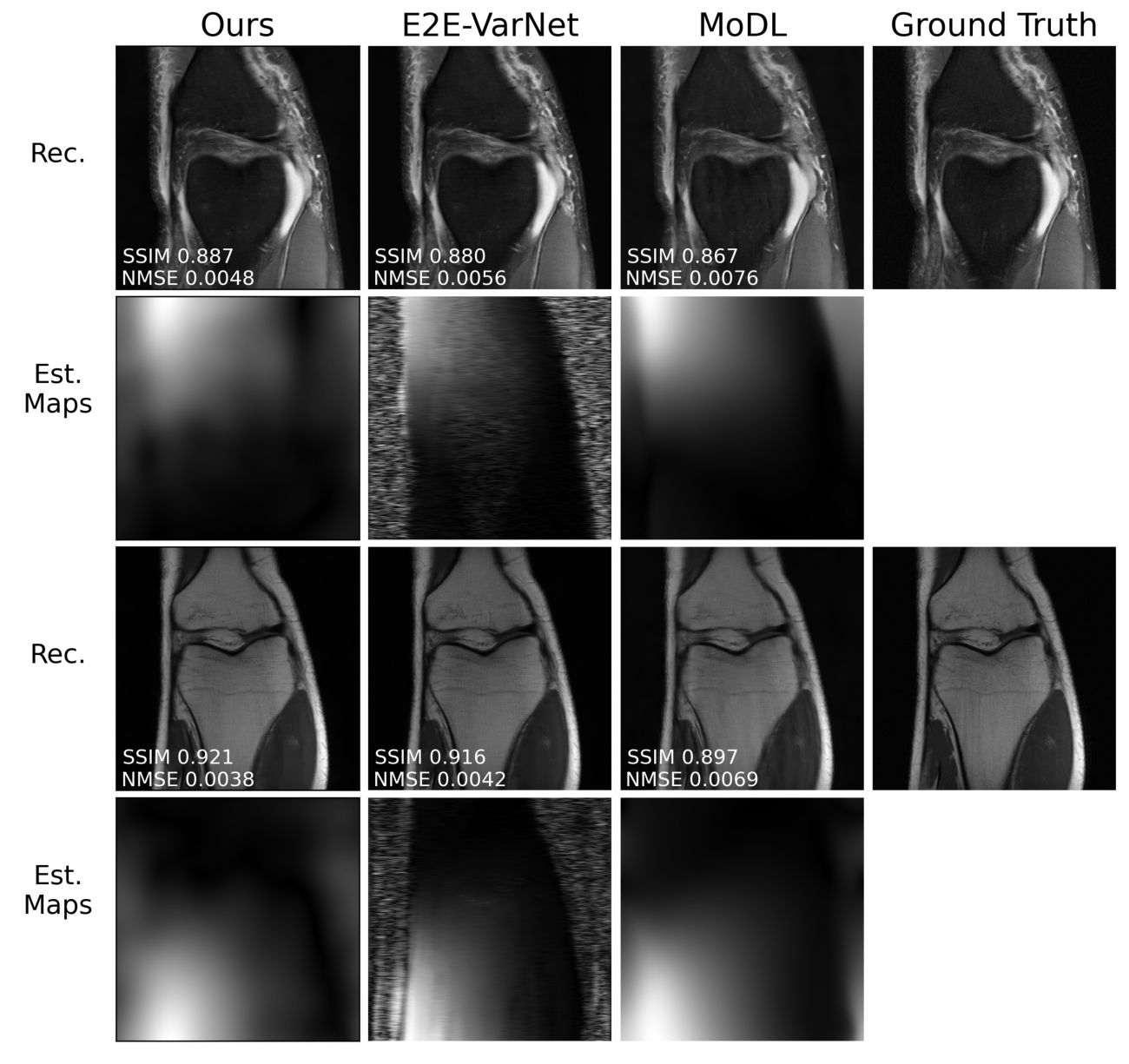Deep J-Sense: Accelerated MRI Reconstruction via Unrolled Alternating Optimization

Overview
Accelerated multi-coil MRI acquisition is an ubiquitous approach in clinical use and is accompanied by reconstruction algorithms. In these systems, a single anatomical region is acquired by a set of coils, each with their own spatially varying sensitivity map. While multi-coil MRI provides additional degrees of freedom through simultaneous measurements of the same anatomical region, it comes with its own set of challenges related to accurately estimating these maps. Deep learning has been recently successfully leveraged to greatly improve reconstruction quality in multi-coil MRI acquisition. However, there are still major open questions concerning the robustness of these models when faced with distributional shifts (scan parameters at test time do not match the ones at training time) or robustness across different training conditions.
In this research project, we aim to solve some of the challenges of robust multi-coil MRI reconstruction and leverage the recent methodology of combining compressed sensing with deep learning, in the form of unrolled optimization to introduce Deep J-Sense: an algorithm that jointly estimates the image and set of sensitivity maps. We formulate multi-coil MRI reconstruction as an optimization problem with two unknown variables and a forward model based on k-space (spatial frequency) convolution. This optimization is unrolled in an alternating fashion, and a separate deep neural network is used for denoising each variable. The entire model is then trained end-to-end. A complete description is available in the paper.
Quantitative Results
We present statistical results obtained with methods trained and evaluate on a subset (five central slices from each scan) of the fastMRI [4] multi-coil knee dataset.


Qualitative Results

References
[1] Arvinte et al, J-Sense: Accelerated MRI Reconstruction via Unrolled Alternating Optimization, preprint, 2021.
[2] Aggarwal et al, MoDL: Model-based Deep Learning Architecture for Inverse Problems, IEEE Trans. Med. Imag., 2018.
[3] Sriram et al, End-to-end Variational Networks for Accelerated MRI Reconstruction, MICCAI, 2020.
[4] Zbontar et al, fastMRI: An open dataset and benchmarks for accelerated MRI, preprint, 2018.
Acknowledgements
Part of this work has been accepted for presentation at the ISMRM Annual Conference 2021. Supported by ONR grant N00014-19-1-2590, NIH Grant U24EB029240, and an AWS Machine Learning Research Award.